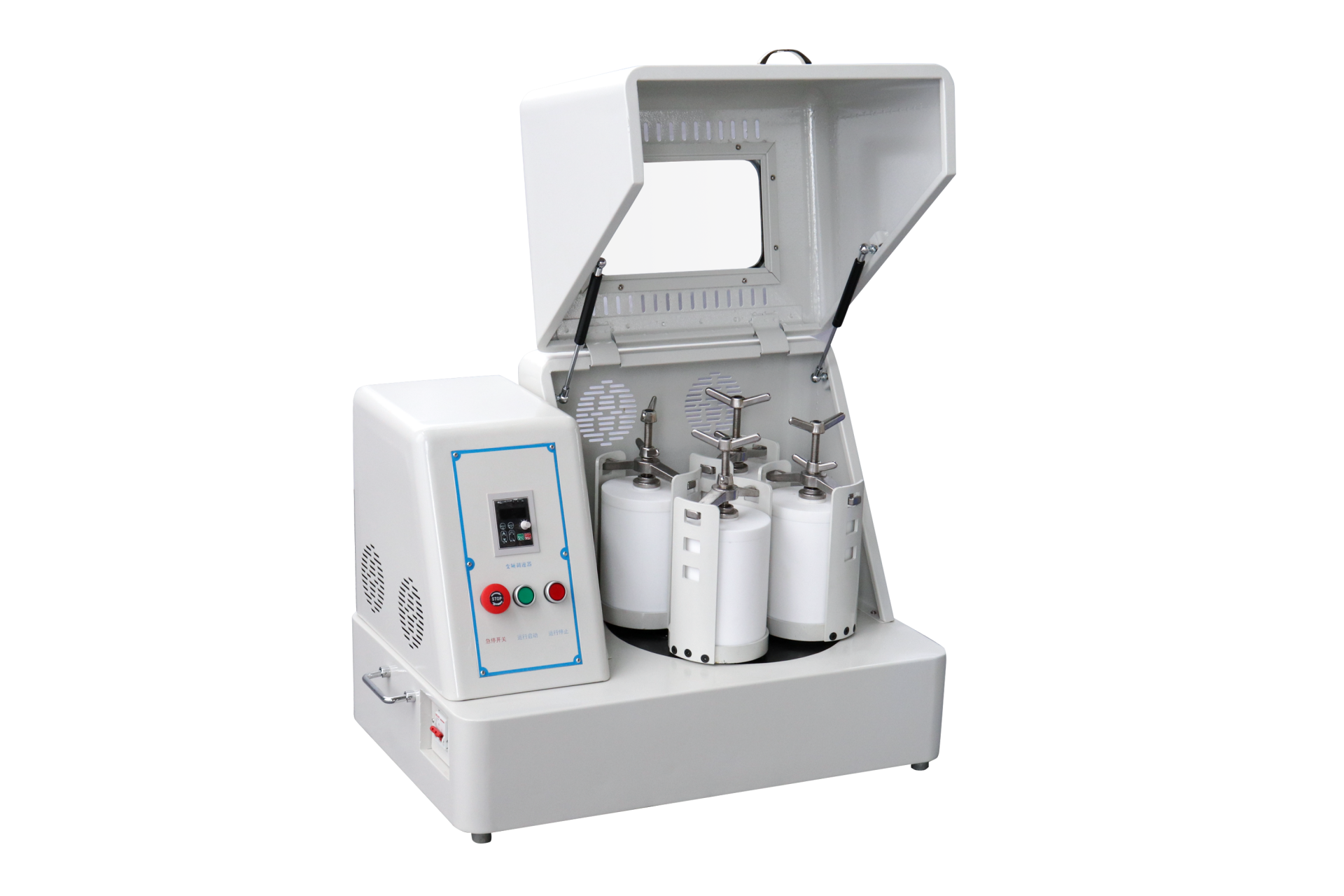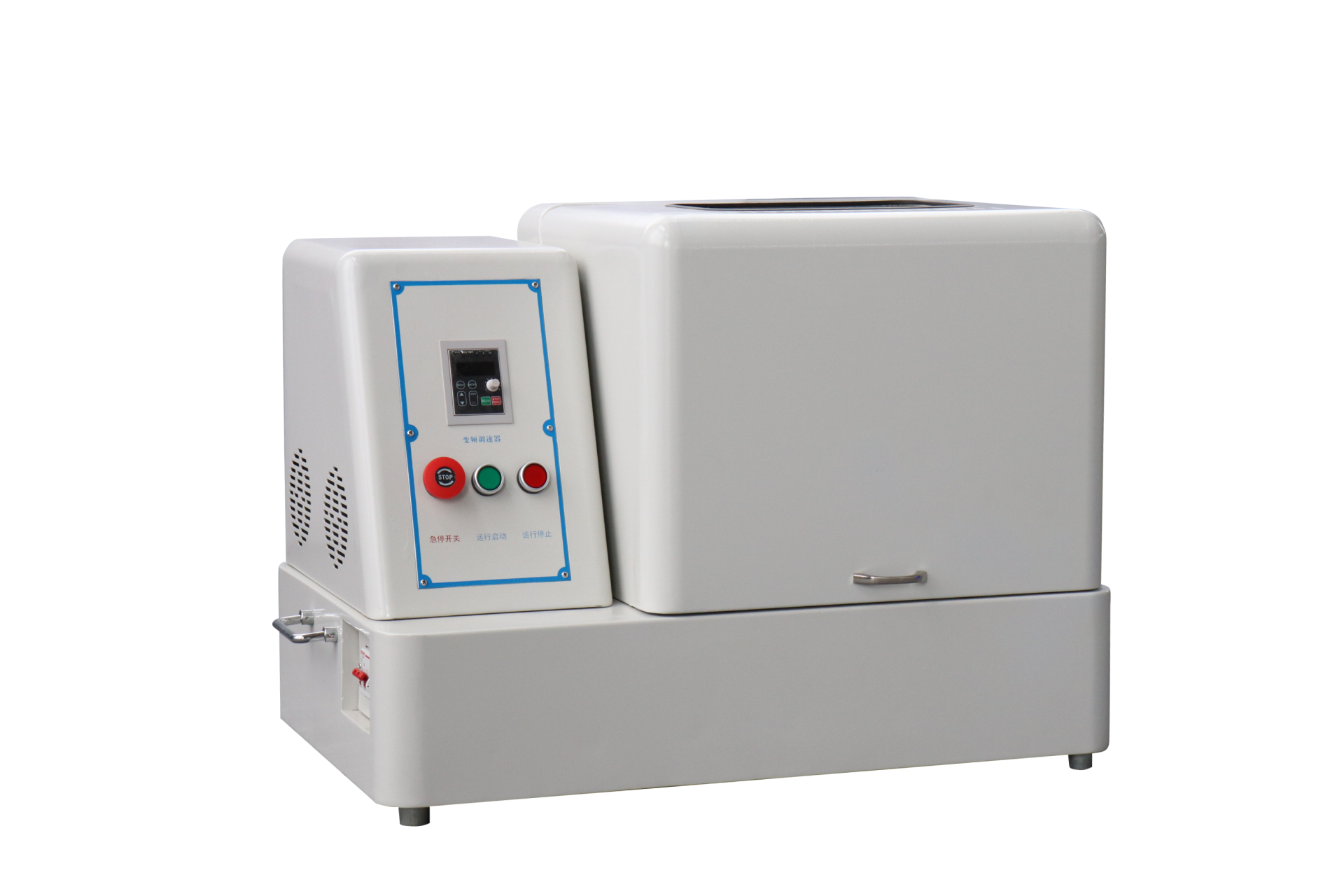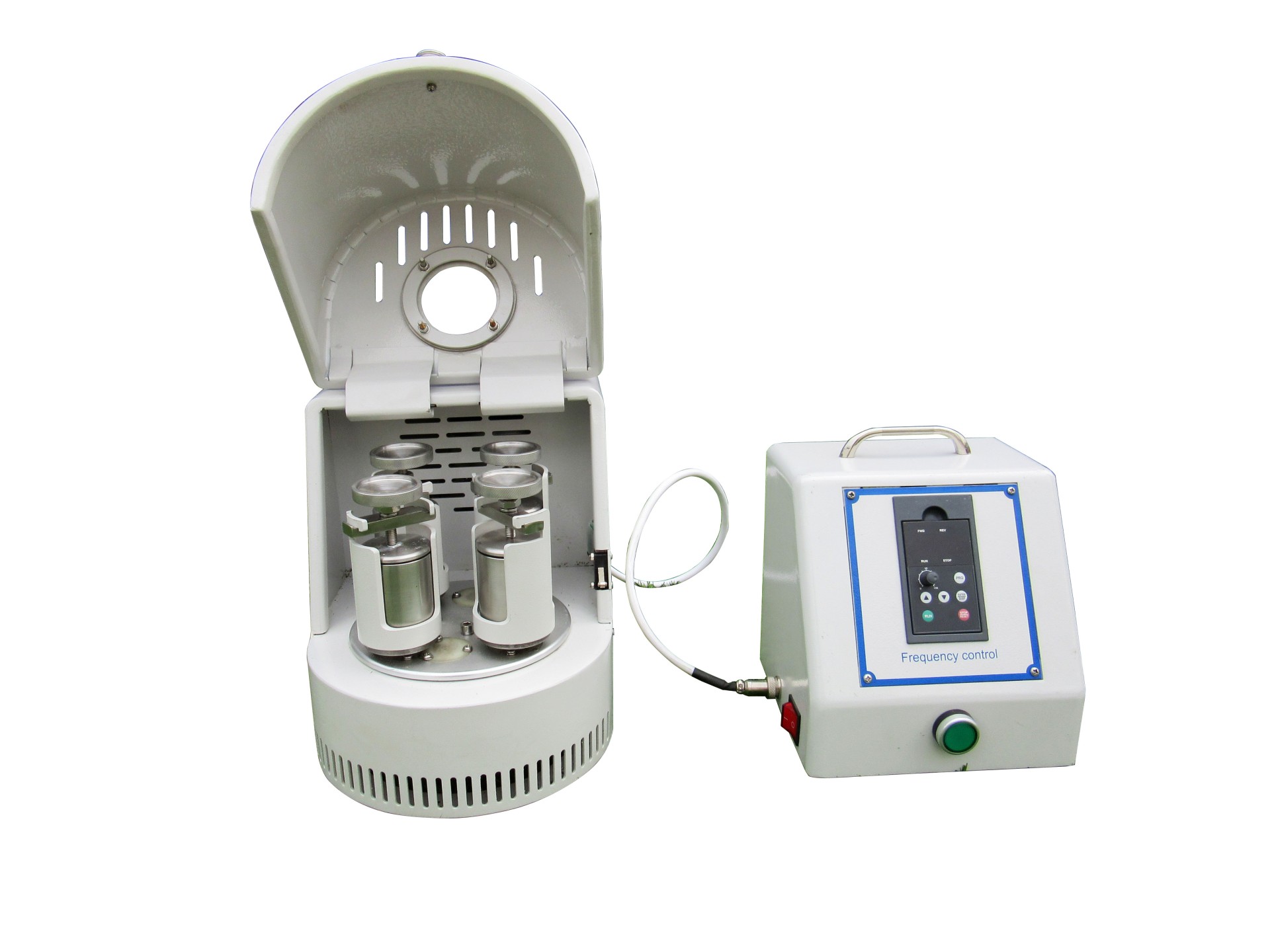The Vertical Square Ball Mill presents a distinctive design in the realm of laboratory-scale grinding equipment. Unlike traditional cylindrical ball mills, this innovative configuration offers potential advantages in terms of space efficiency, sample handling, and operational control. This article delves into the features, working principles, applications, and technical specifications of the Vertical Square Ball Mill, drawing comparisons with conventional ball mill designs to highlight its unique value proposition. Through detailed analysis and comparative assessment, this article aims to provide a comprehensive understanding of the Vertical Square Ball Mill and its potential impact on various research and industrial applications.

Understanding the Design and Working Principle
The core innovation of the Vertical Square Ball Mill lies in its geometric configuration. Instead of a rotating cylindrical drum, it employs a square or rectangular grinding chamber that rotates around a central axis. This design allows for a more compact footprint compared to traditional ball mills with similar capacity. Furthermore, the Vertical Square Ball Mill typically features multiple grinding jars, often four, installed on a turntable. As the turntable rotates, these jars undergo planetary movements, causing the grinding media (balls) and samples within to experience intense impact and shear forces. This mechanism facilitates efficient size reduction and homogenization of materials.
The working principle can be summarized as follows:
Sample Preparation: The material to be ground is loaded into the grinding jars along with appropriate grinding media (e.g., steel, agate, or ceramic balls).
Turntable Rotation: The turntable, on which the grinding jars are mounted, begins to rotate.
Planetary Motion: As the turntable rotates, the grinding jars also rotate around their own axes, creating a planetary motion.
Impact and Grinding: The planetary motion causes the grinding media to impact the samples with high energy, leading to efficient size reduction and homogenization.
Powder Collection: After the grinding process is complete, the powdered samples are collected from the grinding jars.
Advantages of the Vertical Square Design
The Vertical Square Ball Mill offers several potential advantages over traditional cylindrical ball mills:
Space Efficiency
The square or rectangular design often allows for a more compact footprint compared to cylindrical mills with similar grinding capacity. This is particularly beneficial in laboratories with limited space.
Enhanced Grinding Efficiency
The planetary motion combined with the square chamber geometry can potentially lead to more efficient grinding due to the complex impact forces generated within the grinding jars.
Multiple Sample Processing
The Vertical Square Ball Mill commonly accommodates multiple grinding jars simultaneously, enabling parallel processing of several samples. This increases throughput and efficiency in research and development settings.
Controlled Environment
Many Vertical Square Ball Mill models are designed to operate under controlled atmospheres, such as vacuum or inert gas. This is crucial for preventing oxidation or contamination of the samples during grinding. The PDF data highlights models equipped with vacuum ball mill tanks, further emphasizing this feature.
Applications of the Vertical Square Ball Mill
The Vertical Square Ball Mill is a versatile tool with applications spanning diverse fields:
Materials Science
Used for synthesizing nanomaterials, producing composite powders, and preparing samples for materials characterization techniques such as X-ray diffraction (XRD) and scanning electron microscopy (SEM).
Pharmaceuticals
Employed for micronizing active pharmaceutical ingredients (APIs) to improve drug solubility and bioavailability. Also used for formulating drug delivery systems and preparing samples for drug analysis.
Geology and Mining
Utilized for grinding rock and mineral samples for geochemical analysis, mineralogical studies, and ore processing research.
Ceramics
Used for producing fine ceramic powders for manufacturing advanced ceramics, electronic components, and structural materials.
Chemicals
Employed for grinding and mixing chemical compounds, synthesizing new chemical entities, and preparing catalysts.
Environmental Science
Used for preparing soil and sediment samples for pollution analysis, environmental monitoring, and remediation studies.
Technical Specifications and Parameters
The technical specifications of the Vertical Square Ball Mill vary depending on the specific model and manufacturer. Key parameters to consider include:
Power
The power rating of the mill motor, typically ranging from 0.75 kW to 11 kW, dictates the grinding force and capacity of the mill.
Voltage
The operating voltage, commonly 220V or 380V, must be compatible with the laboratory's electrical supply.
Revolution Speed
The speed of the turntable, typically ranging from 25 to 335 rpm, affects the grinding intensity. Adjustable speed control allows for optimization of grinding parameters.
Rotation Speed
The speed of the grinding jars around their own axes, usually twice the revolution speed, contributes to the grinding force.
Total Timing
The maximum programmable grinding time, typically up to 9999 minutes, allows for extended grinding periods.
Alternating Run Time
The duration of forward and reverse rotation, adjustable up to 999 minutes, enhances mixing and homogenization.
Noise Level
The noise level during operation, typically around 60-68 dB, is an important consideration for laboratory environments.
Net Weight
The weight of the mill, ranging from 80 kg to 1100 kg, affects its portability and installation requirements.
Dimensions
The overall dimensions of the mill, ranging from 750x470x564 mm to 1750x1100x1180 mm, determine its space requirements.
Mill Jar Volume
The volume of the grinding jars, ranging from 50 mL to 25 L, dictates the sample size that can be processed.
Feed Size
The maximum particle size of the material that can be fed into the mill, typically less than 3 mm for most materials and less than 10 mm for soil and crispy materials.
Output Granularity
The minimum achievable particle size after grinding, typically down to 0.1 μm, depends on the material and grinding parameters.
Materials of Jar
Common materials for the grinding jars include stainless steel, agate, nylon, corundum, and zirconia, chosen based on the compatibility with the sample and the desired purity level.
Table 1: Technical Specifications of Vertical Square Ball Mills (Based on PDF Data)
| Model No | Power (kW) | Voltage | Revolution Speed (rpm) | Rotation Speed (rpm) | Total Timing (min) | Mill Jar Volume (L) |
|---|---|---|---|---|---|---|
| XQM-2 | 0.75 | 220V-50Hz | 35-335 | 70-670 | 1-9999 | 2 |
| XQM-4 | 0.75 | 220V-50Hz | 35-335 | 70-670 | 1-9999 | 4 |
| XQM-6 | 0.75 | 220V-50Hz | 35-335 | 70-670 | 1-9999 | 6 |
| XQM-8 | 1.5 | 220V-50Hz | 35-290 | 70-580 | 1-9999 | 8 |
| XQM-10 | 1.5 | 220V-50Hz | 35-290 | 70-580 | 1-9999 | 10 |
| XQM-12 | 1.5 | 220V-50Hz | 35-290 | 70-580 | 1-9999 | 12 |
| XQM-20 | 4 | 380V-50Hz | 25-215 | 50-430 | 1-9999 | 20 |
| XQM-40 | 5.5 | 380V-50Hz | 20-195 | 40-390 | 1-9999 | 40 |
| XQM-60 | 7.5 | 380V-50Hz | 27-174 | 40-260 | 1-9999 | 60 |
| XQM-100 | 11 | 380V-50Hz | 27-160 | 40-240 | 1-9999 | 100 |
Comparative Analysis with Conventional Ball Mills
To fully appreciate the benefits of the Vertical Square Ball Mill, it's essential to compare it with conventional cylindrical ball mills.
Footprint
Cylindrical ball mills typically require more horizontal space due to their elongated shape. The Vertical Square Ball Mill, with its more compact design, can be advantageous in laboratories where space is limited.
Grinding Efficiency
While both types of ball mills can achieve efficient size reduction, the Vertical Square Ball Mill's planetary motion may offer faster grinding times for certain materials. However, this depends on the specific materials being processed and the optimized grinding parameters.
Sample Handling
The Vertical Square Ball Mill's multi-jar design allows for simultaneous processing of multiple samples, which can be more efficient than processing samples sequentially in a single-jar cylindrical mill. The provided PDF highlights this advantage.
Atmosphere Control
Both types of ball mills can be equipped with features for controlling the grinding atmosphere. However, the Vertical Square Ball Mill's design may lend itself more easily to vacuum or inert gas operation due to the configuration of the grinding jars within the chamber.
Maintenance
Maintenance requirements for both types of ball mills are similar, involving regular cleaning, inspection, and replacement of worn parts. The complexity of the planetary motion mechanism in the Vertical Square Ball Mill might require slightly more specialized maintenance expertise.
Optimizing Grinding Parameters
Achieving optimal grinding results with a Vertical Square Ball Mill requires careful optimization of several parameters:
Grinding Media Size
The size of the grinding balls should be chosen based on the particle size of the material being ground and the desired final particle size. Smaller balls are generally more effective for achieving finer particle sizes.
Ball-to-Material Ratio
The ratio of grinding balls to the material being ground affects the grinding efficiency. A higher ball-to-material ratio generally leads to faster grinding, but excessive ratios can cause the material to cake or agglomerate.
Rotation Speed
The speed of the turntable should be optimized to provide sufficient impact energy without causing excessive heat or wear. Adjustable speed control is crucial for this optimization.
Grinding Time
The grinding time depends on the material being ground and the desired final particle size. Shorter grinding times may be sufficient for softer materials, while longer grinding times are necessary for harder materials.
Atmosphere Control
If atmosphere control is required, the appropriate vacuum level or inert gas should be selected based on the sensitivity of the material being ground.
Safety Considerations
Operating a Vertical Square Ball Mill requires adherence to safety guidelines:
Personal Protective Equipment (PPE)
Wear appropriate PPE, such as gloves, safety glasses, and a dust mask, to protect against potential hazards.
Proper Ventilation
Ensure adequate ventilation in the laboratory to prevent the accumulation of dust or fumes.
Safe Handling of Materials
Handle materials carefully and follow all safety protocols for the specific materials being ground.
Emergency Procedures
Be familiar with emergency procedures in case of spills or accidents.
Future Trends
The field of ball milling technology is continuously evolving. Future trends for the Vertical Square Ball Mill could include:
Improved Automation
Integrating more sophisticated automation features, such as automated sample loading and unloading, and real-time monitoring of grinding parameters.
Enhanced Control Systems
Developing more precise control systems for regulating temperature, pressure, and atmosphere within the grinding chamber.
Advanced Materials
Utilizing advanced materials for the grinding jars and balls to improve wear resistance and reduce contamination.
Integration with Other Technologies
Combining ball milling with other technologies, such as ultrasonic agitation or microwave irradiation, to enhance grinding efficiency and control.
Comparing Vertical Square Ball Mill Models
Based on the provided PDF data, various models of the Vertical Square Ball Mill are available, each with different specifications to cater to diverse application needs. Here's a comparison based on the key parameters:
Power and Capacity
Models like XQM-2, XQM-4, and XQM-6 offer lower power (0.75 kW) and smaller capacity (2L, 4L, 6L respectively), suitable for smaller-scale research and development. In contrast, models like XQM-20, XQM-40, XQM-60, and XQM-100 offer higher power (4-11 kW) and larger capacity (20L-100L), suitable for larger batch production and more demanding grinding tasks.
Voltage
The smaller models (XQM-2, XQM-4, XQM-6, XQM-8, XQM-10, XQM-12) typically operate on 220V, making them suitable for standard laboratory power outlets. The larger models (XQM-20, XQM-40, XQM-60, XQM-100) operate on 380V, requiring a three-phase power supply.
Speed Control
All models appear to offer frequency control, allowing for precise adjustment of the revolution and rotation speeds.
Grinding Media Compatibility
All models are compatible with various grinding media, including stainless steel, agate, nylon, corundum, and zirconia.
Table 2: Comparison of Vertical Square Ball Mill Models (Selected Parameters)
| Model No | Power (kW) | Voltage | Max. Revolution Speed (rpm) | Max. Rotation Speed (rpm) | Mill Jar Volume (L) |
|---|---|---|---|---|---|
| XQM-2 | 0.75 | 220V-50Hz | 335 | 670 | 2 |
| XQM-4 | 0.75 | 220V-50Hz | 335 | 670 | 4 |
| XQM-20 | 4 | 380V-50Hz | 215 | 430 | 20 |
| XQM-40 | 5.5 | 380V-50Hz | 195 | 390 | 40 |
| XQM-100 | 11 | 380V-50Hz | 160 | 240 | 100 |
Online Comparison with Other Ball Mill Manufacturers
When comparing the Vertical Square Ball Mill to offerings from other manufacturers online, several factors come into play:
Design and Functionality
Many manufacturers offer traditional cylindrical ball mills, planetary ball mills, and jar mills. The Vertical Square Ball Mill's unique design sets it apart, potentially offering advantages in terms of space efficiency and sample handling as discussed previously.
Technical Specifications
It's important to compare technical specifications such as power, speed range, capacity, and material compatibility across different manufacturers and models. The PDF data provides specific values for the Vertical Square Ball Mill, which can be used as a benchmark for comparison.
Applications
Different manufacturers may emphasize different applications for their ball mills. The Vertical Square Ball Mill's versatility makes it suitable for a wide range of applications, but it's important to assess whether it meets the specific requirements of a particular application.
Price and Value
Price is always a key consideration. The Vertical Square Ball Mill's price should be compared to that of comparable ball mills from other manufacturers, taking into account its features, specifications, and potential advantages.
Warranty and Support
Warranty and after-sales support are also important factors to consider. A manufacturer that offers a comprehensive warranty and responsive technical support can provide added value.
Conclusion
The Vertical Square Ball Mill represents a novel approach to laboratory-scale grinding. Its distinctive design, featuring a square grinding chamber and planetary motion, offers potential advantages in terms of space efficiency, sample handling, and grinding efficiency. While traditional cylindrical ball mills remain a popular choice, the Vertical Square Ball Mill provides a compelling alternative for researchers and industries seeking innovative solutions for their grinding needs. By carefully considering its features, specifications, and applications, users can determine whether the Vertical Square Ball Mill is the right choice for their specific requirements. The provided PDF data offers valuable information for comparing different models and assessing their suitability for various tasks.
Furthermore, when evaluating ball mills from different manufacturers, it's crucial to consider factors such as design, technical specifications, applications, price, warranty, and support. The Vertical Square Ball Mill's unique characteristics and potential benefits make it a strong contender in the market, deserving careful consideration by those seeking advanced grinding solutions.



